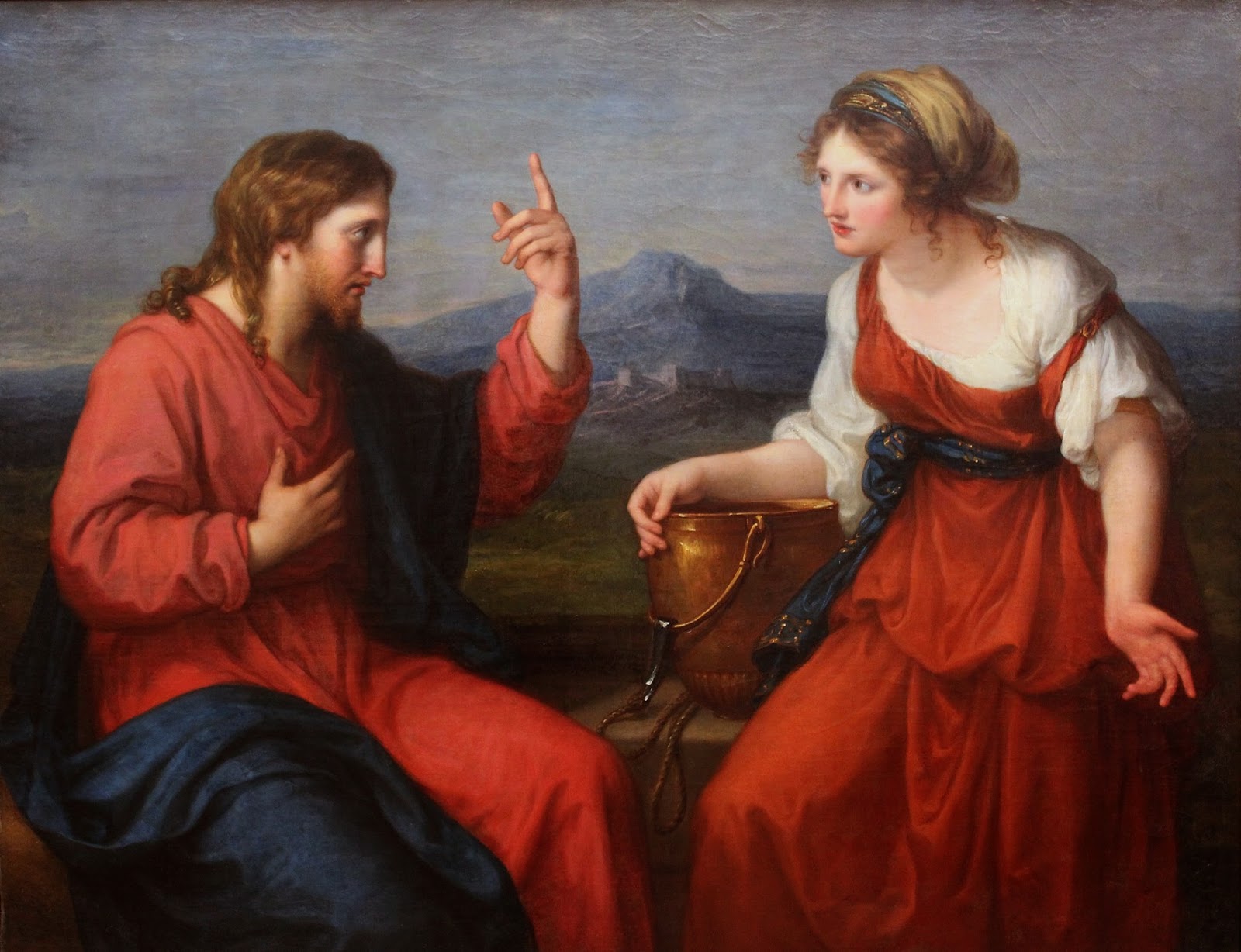These
five imaginative exercises were devised for those attending the quiet
mornings in St Hilda's Church in Lent 2015.
They
are meant to be followed in sequence:
3.
Enemies and Opponents (this one)
4.
Power and Violence
5.
The Resurrected Jesus
The
framework for each exercise is the same. The sequence follows an
emotional path towards the cross and, through it, to the resurrected
Jesus.
An
imaginative path:
Please
note: this can be a heavy duty exercise. Don't go any
further or stay any longer than you are comfortable with. It's not
meant to be an ordeal but an opportunity for discovery.
Take
the break as advised. Have a proper break. Have a cup of tea (or your
preferred equivalent). Go for a walk. Distract yourself, and then
come back to pick up where you left off.
Don't
leave a section suddenly. Always leave on a positive note by saying
thank you, and politely excuse yourself before you turn to go.
It
is important that, in your imagination, you walk yourself from your
present surroundings and circumstances into the imagined setting –
and equally important that you walk yourself back out again at the
end. Take it steady: there is no rush.
And
if you do leave abruptly then
look at what it was that made you leave. Offer it in prayer.
1.
Enemies
and Opponents
1.
The first step
Imagine
the landscape of Jesus' day (don't try to 'get it right')
Walk
into the place, carrying an empty bag
This
is a quiet, safe place, with no-one else around
Look
around and find a comfortable spot,
imagine
something as a landmark, and put your bag down
fill
the bag with all the everyday things you bring with you,
what
you're going to do when you leave here
what
you need to get on with later
conversations
you've had, or need to have
all
those things you ought to have done but haven't got around to
and
when you've filled the bag
put
it down and leave it there. It will be safe.
 |
El Greco,
Christ Driving the Money Changers from the Temple,
|
2.
The first turn
Walk
a little way along a path, go round a corner
There
are two of Jesus' disciples stood watching. Stand with them. You are
not on your own.
Look and listen
you can see their agitation before you hear anything.
One person is hurt, distressed
One person is bewildered, disorientated
One person is angry, shouting
Why?
Jesus is at the heart of the group.
What has he said or done to provoke such reactions?
Don't
say anything, just hang around with them a while as an observer, a
watcher, standing to one side of the group.
After
a little while.
Say
thank you, and politely take your leave and return to the spot where
you left your bag, and walk out of the place, back into the church.
TAKE
A BREAK
3.
The second step
Walk
back to the place you were in before, carrying your bag with you
remember:
this is a quiet, safe place, with no-one else around at the moment.
This
time, put more important things into your bag
People
– relationships,
fears,
hopes, anxieties
time
yourself
– who you are
(you
can come back to this spot at any time, everything will be safe)
Leave
the bag again, and set off around the same corner as before. It will
be safe.
 |
| Madrazo, the trial of Jesus before the Sanhedrin |
4.
The second turn
When
you round the corner Jesus is sat there, a small man on his own,
waiting for you
The
crowd is still there, so are the disciples. Only now the disciples
are stood behind Jesus, looking at the crowd over Jesus' shoulder.
Join the disciples. You are protected by them.
Listen,
look,
Consider: how is Jesus in the face of such hostility? How does he
respond?
Consider: what is it in Jesus that could provoke such antagonism?
Ask him.
And if Jesus does not provoke these reactions in us – then what is
it that we don't see, or that we don't acknowledge?
Ask him.
It is hard to stand in the face of such hurt and anger with its threat of violence. You are safe but don't stay too long; Jesus will wait for you.
5.
The third step
When
it's time, when you're ready:
Say
goodbye properly, and thank the disciples you stood with, thank Jesus
Walk
back round the corner to where your bag is
Sit
beside it for a while,
reflect
on the experience of Jesus you've just had
reflect
on what it felt like to be a foreigner, an outsider
Take
a last look around and, when you're ready,
pick
up your bag and carry it with you as you
walk
back into the present
In
the present:
Unpack
your bag: in your imagination slowly take out all the important
things and re-assume them; then take out the less important things
and own them again. Cherish each item.
TAKE
A BREAK. Relax. Do something. Give yourself time to reflect on your
experience.
and
repeat if you wish.
Please
feel free to leave a comment.






